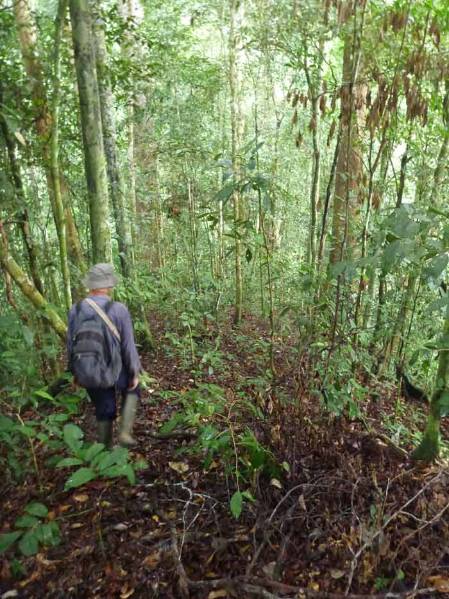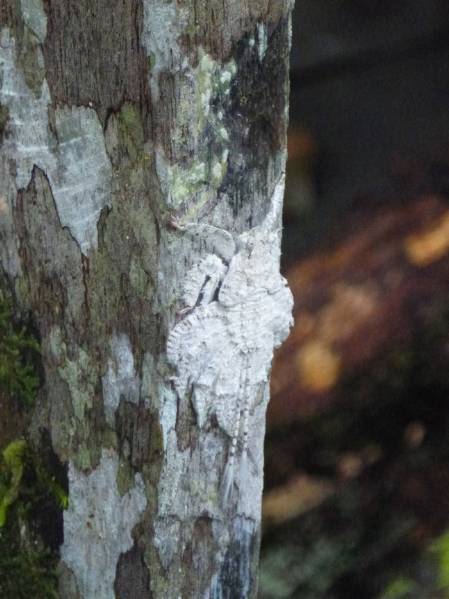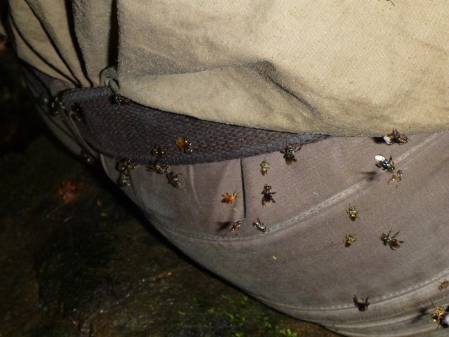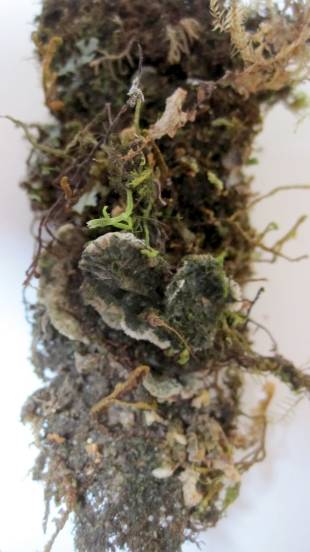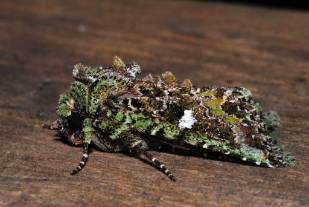Although the rainforest is full of wildlife, it can be easy to miss. Many of the animals that live here, especially the invertebrates, are well camouflaged or spend their time hidden in rotting wood, buried in the soil or under the leaf litter that carpets the floor of the forest. That’s why Dan and the team are being so thorough and using a variety of methods to find these animals.
Dan and Kerry sampling the leaf litter.
The sieve inside the bag.
Dan’s project involves sampling at three different locations in Sabah, Borneo. You can find out about the first two locations and what Dan experienced there by reading his blog.
Lichenologist Holger Thus walking through the rainforest in Maliau.
By sampling in these three areas, Dan hopes to gain a better understanding of the diversity of invertebrates and lichens found in these rainforests, and how similar or different they are between locations eg whether Maliau rainforest and Danum Valley rainforest (a previous sample location) share many of the same species of termite. By understanding how different a rainforest is, and whether many of its species are unique to that forest, conservationists can start to prioritise the protection of certain areas.
An amazingly well camouflaged insect that we spotted hiding against some lichen in the rainforest.
It’s hard work setting up traps and sifting through leaf litter. If we sit still for a moment, for a quick snack or a drink, we find ourselves surrounded by small flying insects. These are sweat bees and, as the name suggests, they are attracted to our sweat (which in these conditions is copious!) Sweat Bees collect the sebaceous secretions of other animals, such as sweat or tears, and take it back to their nest to make it into honey!
Sweat Bees on Dan’s back.
Once back at the Studies Centre, the team have to put the leaf litter samples into Winkler Bags. This allows them to collect (in a pot at the bottom of the bag) any invertebrates that are amongst the litter.
Leaf litter material is left in Winkler Bags for three days.
One animal often found in the leaf litter, and in many of the other traps, is the largest species of ant in Borneo – Camponotus gigas. A massive ant, but not at all aggressive.
A Camponotus gigas ant on my hand.




